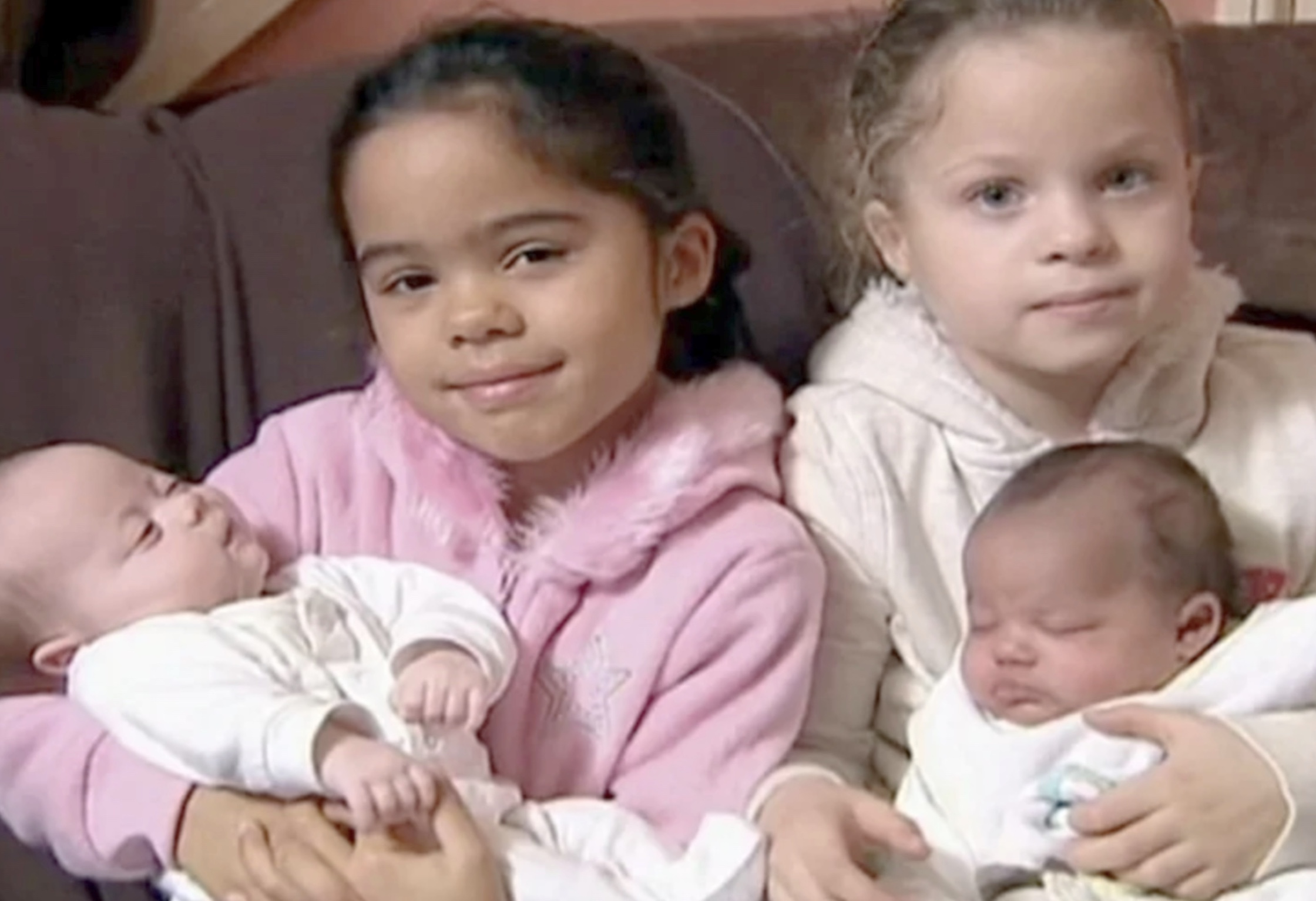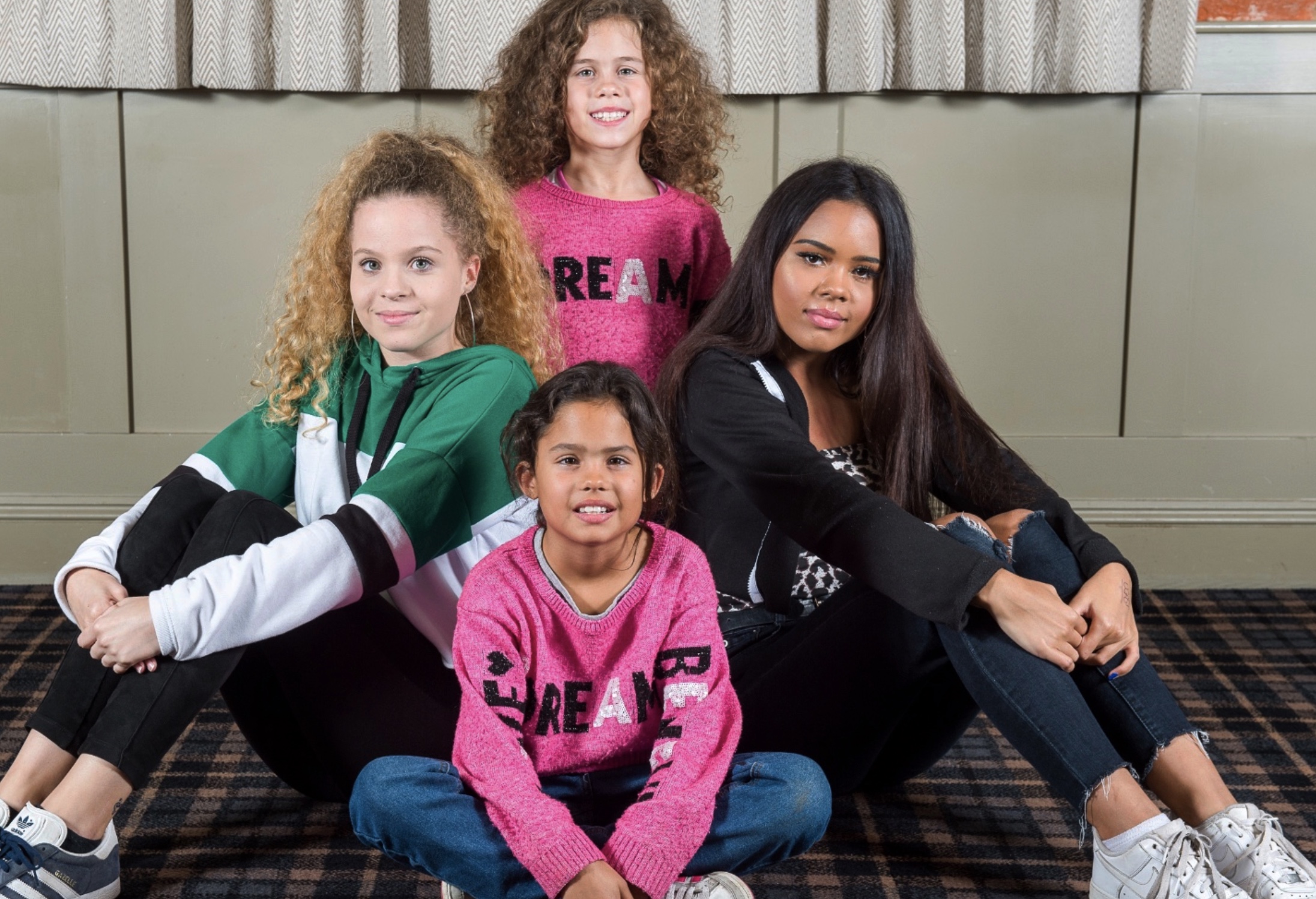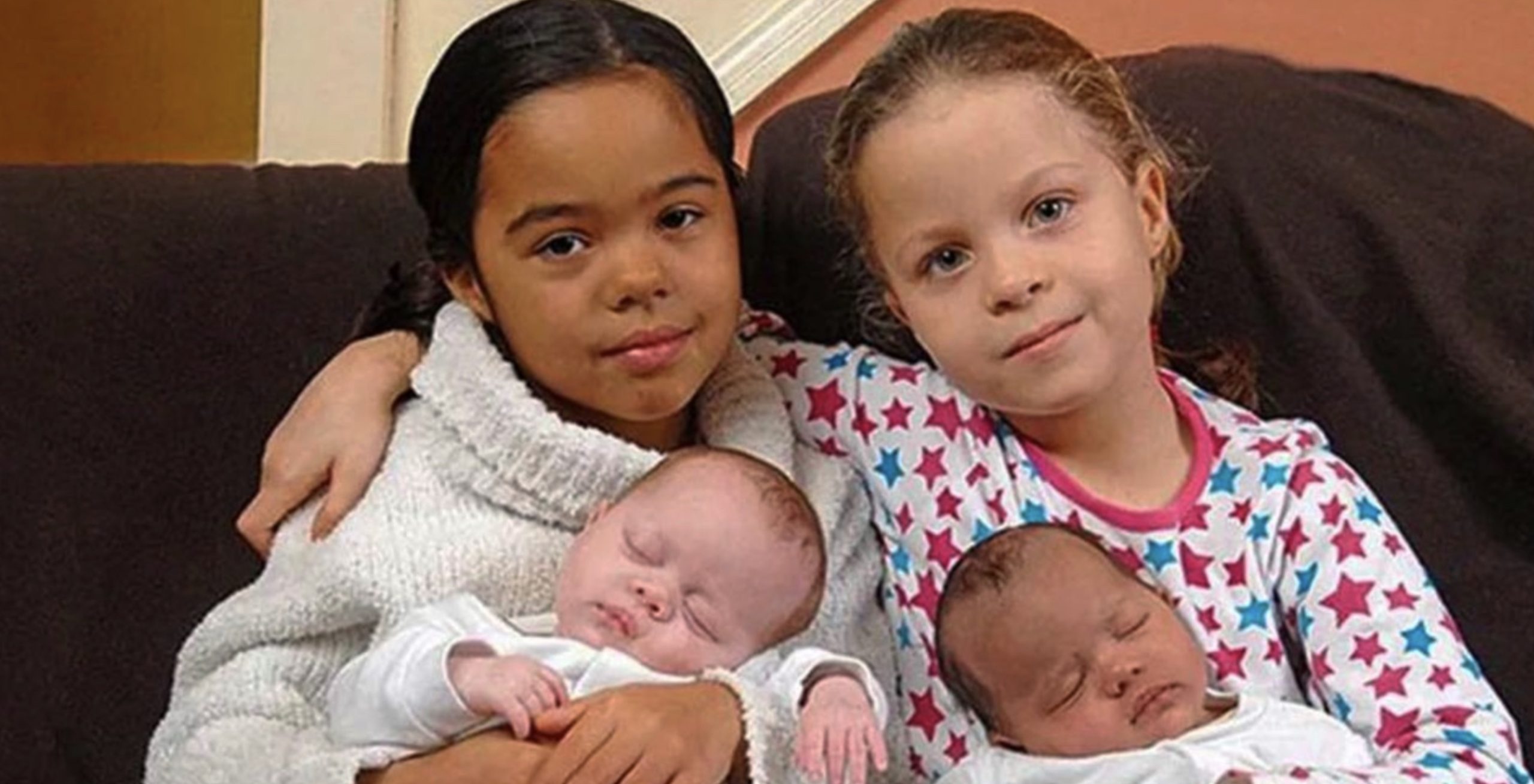In the world’s vast tapestry of wonders, some phenomena are so extraordinary that they capture our collective imagination. Among these marvels are Alison Spooner and Dean Durrant’s children, two sets of twins with a unique characteristic: each set includes one black child and one white child, reflecting their parents’ diverse heritages. This rare occurrence has distinguished their family as a remarkable case study in genetics.
Dean, of West Indian descent, has dark skin and hair, contrasting with Alison, who has white skin, blue eyes, and red hair. Their first set of twins arrived in 2001, defying conventional expectations with one daughter, Lauren, inheriting Alison’s lighter complexion and features, while her twin sister, Hayleigh, took after Dean.

This phenomenon, already a rarity with odds of 1 in 500,000 for biracial twins, astoundingly repeated itself with the birth of their second set of twins in 2009. Lauren and Hayleigh, at 18, shared insights into their experiences as biracial twins. Frequently met with skepticism, they’ve had to prove their twinship to disbelieving onlookers, highlighting a society still grappling with understanding such genetic wonders.
College brought challenges and curiosities, as their distinct racial identities drew them into different social circles, yet they consistently affirmed their unique bond as twins. Their younger sisters also embody this remarkable genetic trait, enhancing the family’s uniqueness.

Experts suggest that while non-identical twins are uncommon, the likelihood of mixed-race, non-identical twins being born with distinctly different skin colors is even rarer, making the repeated instance in the Durrant-Spooner family astronomically unlikely.
The younger twins have evolved to resemble each other more closely over time, differing from their older siblings’ more distinct appearances. Yet, all four girls embody a fascinating intersection of genetics and identity, illustrating nature’s capacity for diversity and wonder.

Their existence challenges common perceptions of race and family, offering a poignant narrative of unity and individuality within a single, extraordinary household.
